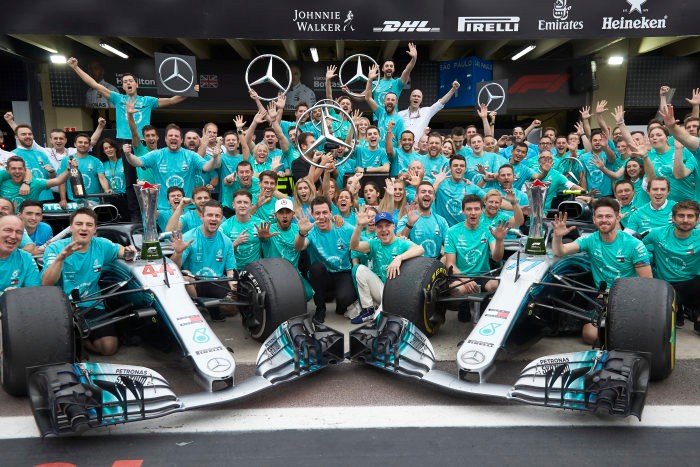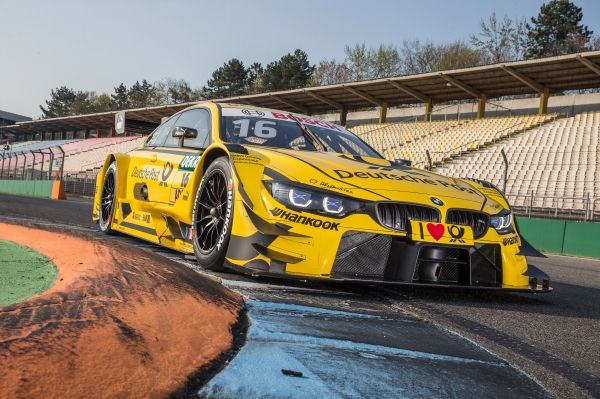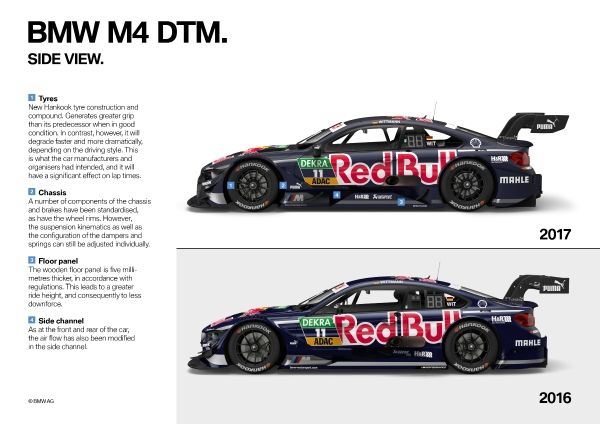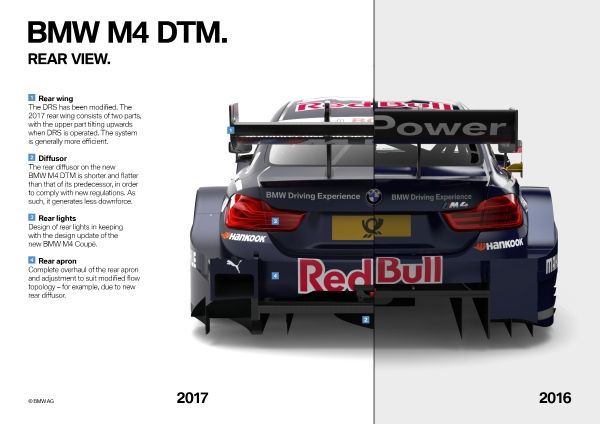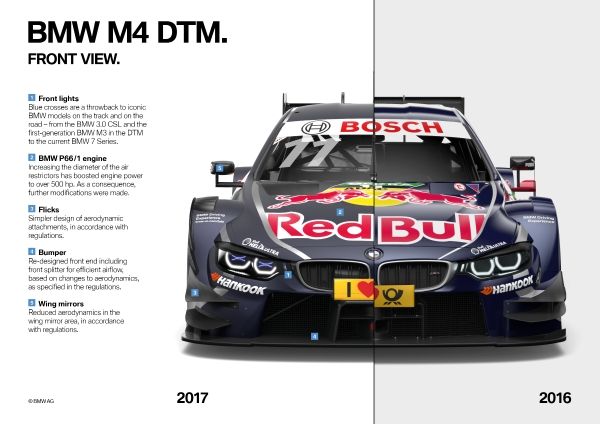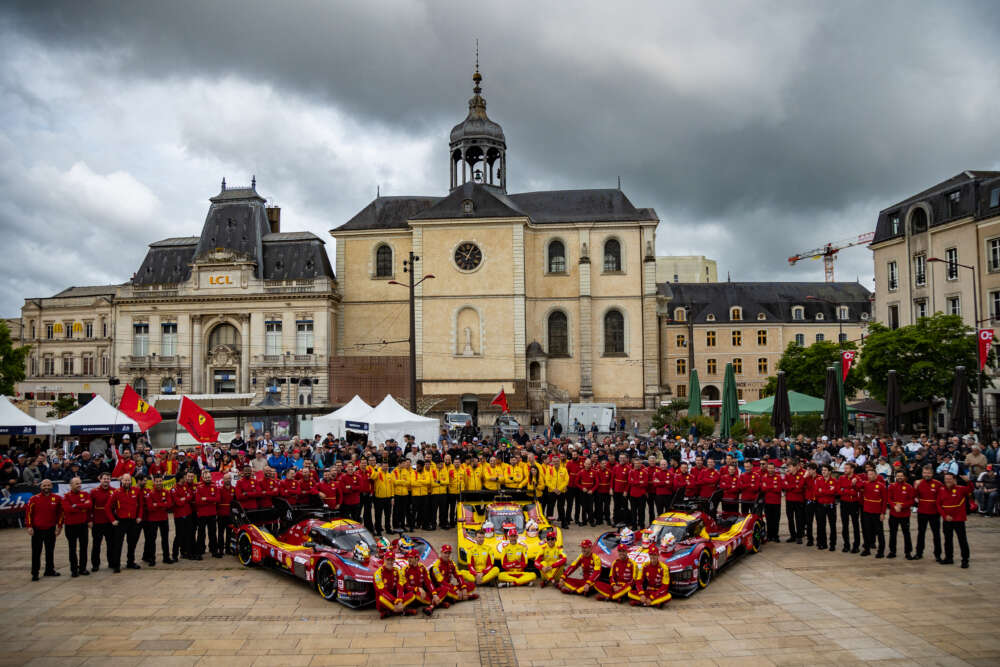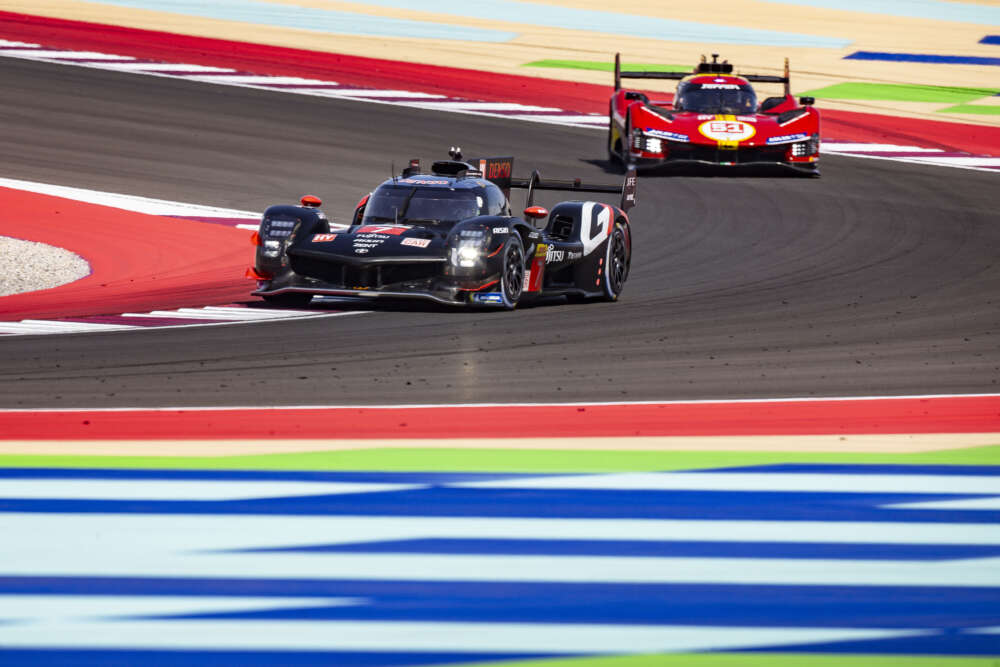A new challenger in the starting blocks: a detailed look at the BMW M4 DTM for the 2017 season.
A month ahead of the first race of the year in Hockenheim (GER), BMW Motorsport is very well prepared for the 2017 DTM. While the drivers and teams can call on a wealth of experience as they go into the sixth season since BMW’s return to the fiercely-competitive touring car series, the car is a newcomer: BMW Motorsport lines up this year with the BMW M4 DTM, which has been developed according to the new technical regulations.

Munich. A month ahead of the first race of the year in Hockenheim (GER), BMW Motorsport is very well prepared for the 2017 DTM. While the drivers and teams can call on a wealth of experience as they go into the sixth season since BMW’s return to the fiercely-competitive touring car series, the car is a newcomer: BMW Motorsport lines up this year with the BMW M4 DTM, which has been developed according to the new technical regulations.
With four titles in three years: the vehicle designation BMW M4 DTM is synonymous with great success. Marco Wittmann (GER) won the Drivers’ title with this car in both 2014 and 2016. BMW Team RMG also picked up the Teams’ title in 2014, while BMW won the Manufacturers’ Championship in 2015. This year sees the dawn of a new era. In the light of the new regulations, the BMW M4 DTM has been given a workover and undergone significant development. The BMW M4 DTM now generates over 500 hp of engine power, while the aerodynamics have also been the subject of extensive modifications. Innovative technology was used when manufacturing the components.
“We are very much looking forward to the new DTM season. The many changes are primarily aimed at one thing: even more spectacle for fans at the circuit and watching on screen,” said BMW Motorsport Director Jens Marquardt. “I really like the new, more powerful cars. The drivers at the wheel will make even more of a difference in the future, and fans will get even closer to the teams and drivers at the circuit. This combination promises to produce a thrilling season in 2017. Our engineers have worked hard over the past few months to develop a host of detailed new solutions for the BMW M4 DTM, based on the DTM regulations for the 2017 season. I am very proud of this team effort. One of my personal highlights is the new look of the BMW M4 DTM. The blue crosses are a design element that originates from the iconic BMW 3.0 CSL of the 1970s. Any DTM fan will also recognise the blue crosses from the legendary BMW M3 DTM in the 1980s, when they were still stuck on. In 2017, we do this digitally – as is also the case, for example, with the new BMW 7 Series. We are looking forward to the first race weekend in Hockenheim.”
Wind of Change.
The regulations required the BMW Motorsport engineers to take a new approach to aerodynamics when developing the BMW M4 DTM. A shorter diffusor and the fact that the ride height has been increased in line with regulations, reduce downforce and ‘dirty air’. The flow topology around the car was completely revised. The front bumper now has a completely new shape and forms the starting point for the flow of the air around the car. The wing mirrors will have a more conventional design again in 2017 according to the regulations. Among the many clearly visible modifications are the even more prominent contouring of the side channel, the vent ducts on the rear wheel arches, which are being used for the first time, and the incredibly detailed design of the rear of the car.
The rear wing is also one of the more easily recognisable changes to the 2017 DTM cars. The Drag Reduction System (DRS) has been modified. Up until now, the rear wing consisted of just one profile and was lowered as one part when DRS was triggered. The rear wing of the new BMW M4 DTM is made up of two profiles, with the just the top profile tilting upwards when DRS is activated. Unlike before, the end plates no longer move with the wing. The range of adjustment for the system is up to 40 degrees for 2017, making it more efficient than last year.
The front splitter and underbody of the DTM cars are standard components, in accordance with the new regulations. The same goes for the floor panel, which is five millimetres thicker than before. The rear diffusor also has a completely new shape and is shorter and flatter than that of the previous model.
Over the course of the aerodynamic development of the new BMW M4 DTM in the BMW Group’s Aero Lab, the engineers had to be even more efficient than usual: they had just 50 days in which to test the new model in the wind tunnel and to optimise it. As a result, CFD calculations, simulations and the rapid prototyping of components from wind tunnel models played a more significant role.
Even more power.
When it comes to the engine, the DTM regulations for the 2017 season allow a larger diameter for the air restrictors, through which the engine draws in its combustion air. Having enlarged the air restrictors from 2 x 28 millimetres to 2 x 29 millimetres, the charge cycle was adapted accordingly. This increased the engine performance by about 25 hp to over 500 hp. Because the engine, now known as the P66/1, takes more cooling, due to the increased performance, the cooling air intakes towards the front of the car were also modified. As another consequence of the greater power, even more powerful and durable carbon-fibre brake disks are also used in the DTM in 2017.
In its final spec, the BMW V8 engine consists of almost 800 different components. In total, the powerhouse is made up of almost 4,000 individual parts. When designing the DTM power unit, BMW took full advantage of the technological know-how of the BMW Group. The high-tech foundry at the BMW plant in Landshut contributed the large castings, such as cylinder heads and crankcases. The processing of the castings, their coating, and any necessary thermal treatment, was performed by the appropriate specialist departments in Munich.
BMW Power continues to be transferred to the track via a six-speed, sequential racing transmission, which is operated pneumatically via shift paddles on the steering wheel. It has eleven transmission ratios, which allow the engineers and drivers to react to the circuit and engine characteristics when setting-up the car.
Innovative technology for even greater efficiency.
The engine mount is a complex structural component, which is placed under great strain, and connects the engine frame to the engine. It was manufactured specifically for the DTM car using an additive 3D printing procedure and optimised using topology.
BMW Motorsport engineers and their colleagues from BMW production development have been regarded as pioneers in the field of additive manufacturing for decades. Together, they are forging ahead with this future-oriented manufacturing technology, increasing both the efficiency and speed of the production of motorsport components. Since 2015, BMW Motorsport has used a water pump wheel made on a 3D printer in its DTM engines. The high-precision component, which is subject to high stresses, consists of an aluminium alloy and has proven its worth in the tough motorsport environment.
The chassis for the 2017 DTM season consists of many standard parts: shock absorbers, anti-roll bar, wishbone, wheel mounts, wheel hubs and wheel nuts are now prescribed as standard. However, the BMW Motorsport engineers had free rein when it came to the side springs and the third element of the front axle, as well as the configuration and layout of the standard parts.
The carbon-fibre monocoque is again instrumental in ensuring the safety of the drivers in the new BMW M4 DTM. With an integrated tank, steel roll cage, and additional crash elements, it provides effective protection for the driver in case of an accident.
New conditions, lap by lap.
The interaction between the chassis and the 2017 generation of Hankook race tyre was also of great importance. With a new design and new compound, the DTM’s tyre partner is adding another exciting element to the coming season. The new dry tyre for the DTM – the Ventus Race – will generate greater grip than its predecessor when in good condition. In contrast, however, it will degrade faster and more dramatically, depending on the driving style. This is what the car manufacturers and organisers had intended, and it will have a significant effect on lap times.
Finally, new, characteristic LED front lights round off the appearance of the 2017 model. They literally give the car a “dynamic look”. The rear lights have also been redesigned.
Marco Wittmann discusses the BMW M4 DTM on video.
During the DTM tests in Hockenheim, DTM champion Marco Wittmann took time out to explain the most important modifications to his Red Bull BMW M4 DTM. You can find the video here: https://youtu.be/oLqhf0lxeLw.
A compact look at the key modifications to the BMW M4 DTM.
Front:
Front lights: Blue crosses are a throwback to iconic BMW models on the track and on the road – from the BMW 3.0 CSL and the first-generation BMW M3 in the DTM to the current BMW 7 Series.
BMW P66 /1 engine: Increasing the diameter of the air restrictors has boosted engine power to over 500 hp. As a consequence, further modifications were made.
Flicks: Simpler design of aerodynamic attachments, in accordance with regulations.
Bumper: Re-designed front end including front splitter for efficient airflow, based on changes to aerodynamics, as specified in the regulations.
Wing mirrors: Reduced aerodynamics in the wing mirror area, in accordance with regulations.
Side:
Tyres: New Hankook tyre construction and compound. Generates greater grip than its predecessor when in good condition. In contrast, however, it will degrade faster and more dramatically, depending on the driving style. This is what the car manufacturers and organisers had intended, and it will have a significant effect on lap times.
Chassis: A number of components of the chassis and brakes have been standardised, as have the wheel rims. However, the suspension kinematics as well as the configuration of the dampers and springs can still be adjusted individually.
Floor panel: The wooden floor panel is five millimetres thicker, in accordance with regulations. This leads to a greater ride height, and consequently to less downforce.
Side channel: As at the front and rear of the car, the air flow has also been modified in the side channel.
Rear:
Rear wing: The DRS has been modified. The 2017 rear wing consists of two parts, with the upper part tilting upwards when DRS is operated. The system is generally more efficient.
Diffusor: The rear diffusor on the new BMW M4 DTM is shorter and flatter
than that of its predecessor, in order to comply with new regulations. As such, it generates less downforce.
Rear lights: Design of rear lights in keeping with the design update of the new BMW M4 Coupé.
Rear apron: Complete overhaul of the rear apron and adjustment to suit modified flow topology – for example, due to new rear diffusor.
Technical Data BMW M4 DTM.
Dimensions:
Length: 4,725 mm
Width: 1,950 mm
Height: approx. 1,200 mm
Weight: 1,120 kg (in accordance with regulations, without driver, dependent on performance ballast)
Engine:
Type: P66/1, 90° V8 aspirated engine
Capacity: 3,999 cc
Weight: 148 kg
Bore: 93 mm
Stroke: 73.6 mm
Engine speed: max. 8,500 rpm
Performance: over 500 hp
Air restrictors: 2 x 29.0 mm, in accordance with regulations
Cylinder block and cylinder head made from cast aluminium at the BMW foundry in Landshut; steel crankshaft; four valves per cylinder, operated by bucket tappets; steel camshafts, driven by chains; Low pressure, intake-manifold fuel injection, one injection nozzle per cylinder; dry sump system
Acceleration: 0-100 km/h in 2.6 sec.
Top speed: approx. 285 km/h
Tank capacity: 120 litres
Chassis:
Carbon-fibre monocoque with integrated tank and steel roll cage; carbon-fibre crash elements on sides; carbon-fibre crash elements on front and rear
Transmission:
Sequential 6-speed sports gearbox, operated via pneumatic shift paddles mounted on the steering wheel; 4-plate ZF carbon-fibre clutch; adjustable multi-disc limited-slip differential
Front axle/rear axle:
Double wishbone suspension with struts and adjustable shock absorbers (six settings); H&R springs
Brakes:
Hydraulic dual-circuit brake system; alloy, monoblock brake callipers; internally-ventilated, carbon-fibre brake disks front and rear; brake balance adjustable by driver; electromagnetic start valve
Wheels:
Aluminium forged wheels; 18” x 12” front, 18” x 13” rear
Tyres:
Hankook; front: 300-680-18, rear: 320-710-18 (new design and compound)

